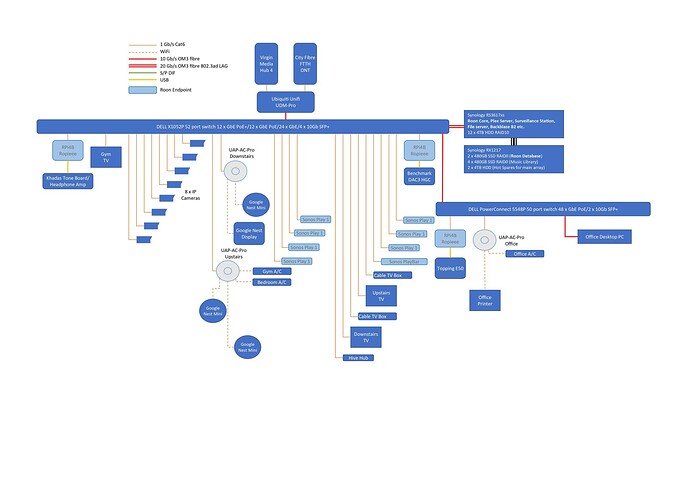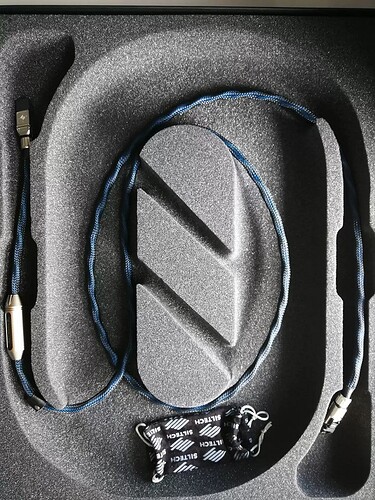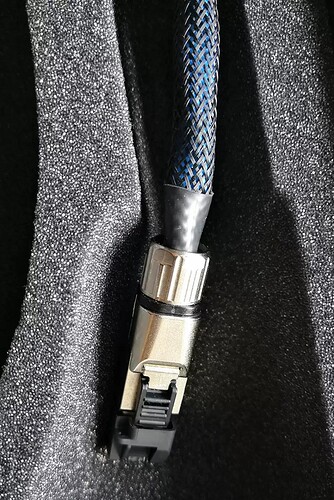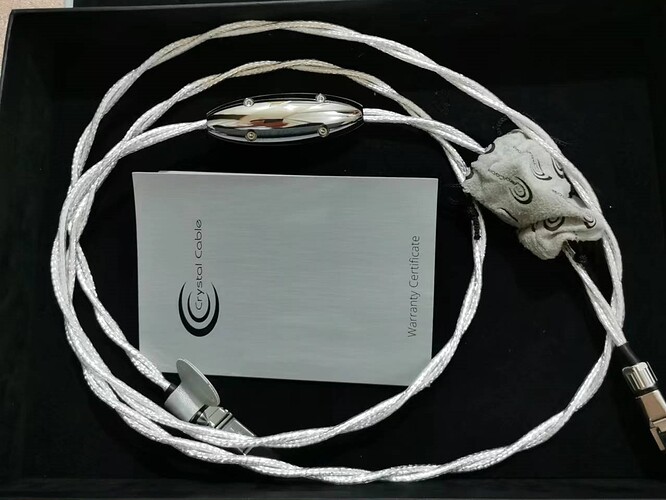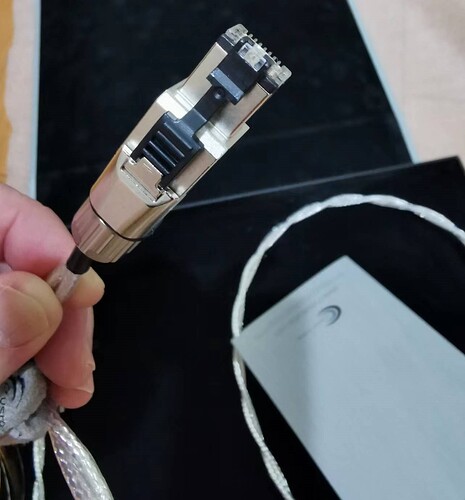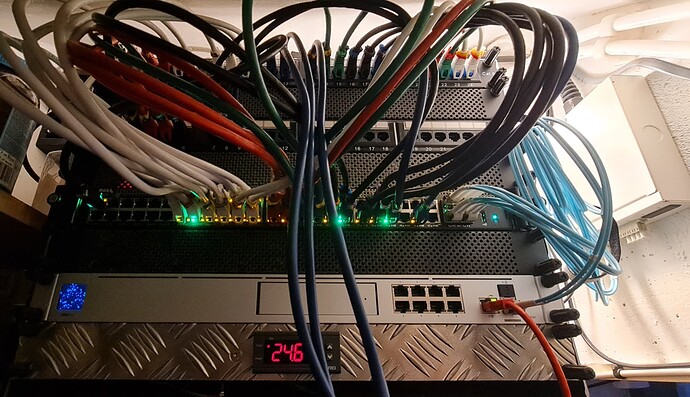A difference is one thing…is it a positive or a negative that is the question…
Thanks for the weeds, I mean reads. Straightened out the whole subject for me.
Still, I doubt whether any cable that is up to spec will produce any interference to such a degree as to affect one’s listening experience. In two of the articles you posted the emphasis is on the production of interference and primarily in device/PCB design.
Of course, this doesn’t apply to those people who have extremely resolving systems/ears. ![]()
![]()
Exactly, thats is where your impression matters, and you need to decide if the change is good or bad (if any) and you need to decide if it is worth you $$$.
I agree, just trust your ears and respect everybody’s opinion even if it isn’t yours… If you like the ‘new’ sound, go for it!
Change may be in the air. The EU believes that the abuse of unsubstantiated “reviews” in the marketing of a whole range of consumer products is now endemic.
This looks to me very much like the typical audiophile tactic of indirect “proxy” advertising via reviews and endorsements in the press and on-line. Many audiophile products cannot be effectively marketed directly by the manufacturers as the worse excesses of their unsubstantiated claims immediately fall foul of “deceptive advertising” legislation. There were several famous test cases in the UK years ago. There is a useful summary by ASR but gradually the regulation fell by the wayside as the manufactures found loopholes.
I do not know if there have been any more recent cases challenging the claims of a new generation of audiophile ethernet equipment. Probably not. But the legislation surrounding “fake news” has gone hot for a range of reasons not relevant to an audio hobbyist site like this. Still, I wouldn’t be surprised to see the worse excesses of the audiophile industry being swept up in the cross-hairs of wider initiatives like this. I believe something similar is being planned by the FCC in the States but I didn’t have time to verify.
Will we? High-end manufacturers do things for more than one reason, typically. Marketing and advertising for one. Mollifying unrealistic concerns of potential customers, for another. “Asymmetrical isolation feet”, for heaven’s sake. On a computer.
But there’s another thing lurking here. Given that hobbyist magazines and Internet reviewers are largely an unreliable swamp of corrupt cheerleading for whoever will pay the most for advertising, who are we to trust? Reputable name brands, for one. Our ears, for another.
Not true, as can be seen by my emphasis in the following statement …
Rather than grouping noise into EMI and RFI, systems designers group noise into radiated and conducted EMI. This grouping focuses on the mechanism by which EMI is produced or received, rather than focusing on a frequency range, as is the case with RFI.
… taken from your link …
Have you any experience in electronic equipment design, or ever read through any of the respective standards for, or participated in, electronic equipment compliance testing prior to being placed into a market?
I posted a link to the ASA website with their ruling against Chord Company a while back in relation to fanciful claims on another cable discussion.
The EU stance is an interesting one - it could be the death knell for audiophile magazines and online review sites, at least in Europe anyway. It also has potentially far-reaching consequences for manufacturers and their unsubstantiated claims.
I know I pledged to stay out of this discussion, but the scientist/engineer in me can’t let things go.
Following an offline conversation with @Torben_Rick around power supplies and networking, I’m going to run an experiment:
I will record a noise track in REW @-120dBFS and play it at full volume via Roon through my system (PoE powered RPi into Benchmark DAC3 HGC, HPA4, dual bridged mono AHB2) and compare the audibility of noise vs nothing playing. Heck, I’ll even pull the RPi’s USB from the DAC and compare with the noise floor of the Benchmark setup.
As of Thursday, I should have internet available via either FTTH (fibre to the home) or via DOCSIS3 (coaxial copper cable). I’ll upload the track, play from the internet over both connections and evaluate any perceptible difference in “noise”
Network setup at home is a complex mix of copper and fibre:
Thus far, I’ve not noticed any difference between fibre and copper, in terms of audio, but I’m going to put it under the microscope and look really hard.
EDIT: If I really can’t hear any difference, I’ll even connect an oscilloscope across the speaker outputs to see if there’s any difference at the mV/μV level…
The review just sounds like “click bait”.
Hurrah, about time.
Perhaps, but carrying out blind listening comparisons is a valid technique and the outcome was hardly surprising to those who understand TCP. That audiophiles would gripe about the findings is also unsurprising.
All of the claims around ethernet affecting sound are never substantiated by blind listening tests.
I did read one such attempt, however the results and conclusions were so statistically flawed as to be laughable…
Not just my opinion, but also the opinion of academics (university lecturers) much more qualified in the field than me.
Hardcore audiophiles have a habit of making outrageous claims which can be substantiated by neither science/engineering nor by blind listening tests.
Whom would you believe?
I purchased nice ethernet cables and a nice switch. I thought it sounded better. I have a nice set up and just couldn’t stand a $5.00 cable feeding my DAC. It made my happy, so it worked.
I guess my 10Gbe switch isn’t very audiophile, but it is cool… it has a tiny noisy fan in it.
Good thing it’s in the basement. ![]()
![]()
![]()
I’d put money on both of those cables failing to meet the IEEE Cat6 standards on a Fluke tester.
Their construction doesn’t meet the twisted pair specs, so it’s highly likely their performance won’t either.
Nice jewellery for your hi-fi system though…
I think if more purchasers of fancy network gear admitted to this, there’d be much less need for this type of thread.
The science and engineering says that ethernet cabling and switches can’t make your system sound better. But if you want to buy stuff that looks nice in your hi-fi rack, then fine.
Your subconscious tells you it sounds better because it looks better. You’d never pick it out in a blind listening test though.
A 1.000 times this. It’s this utter inconsistency in the subjectivists’ logic. Hearing is paramount they say. The very moment hearing is really all they get they pussy away.
Maybe we should have a “showing (off) your network setup” thread?
Mine is probably as far from audiophile as it gets. Properly noisy too, so well away from the hi-fi.
RFI/EMI levels in a home are nowhere near the level that these types of solutions are targeted at.
These are industrial products for industrial environments.
Installations with MW of electrical motors, switchgear, Star-Delta and soft-starters, VFDs, power factor correction, harmonic filters and the like.
The biggest inductive load switched in a home is probably the washing machine motor (~1 kW). Biggest single current load is probably an electric shower (~9 kW).
Don’t get me wrong, I’m not saying RFI/EMI isn’t a thing. It’s just not worth worrying about in a domestic environment.
I can transfer 30Mbps video along side multi channel audio from my NAS to my AVR, I’m pretty sure the 1.4Mbps rate of uncompressed CD let alone compressed FLAC is any sort of challenge to bit perfect streaming for Roon.
Also if I were to use a streaming service that passes the audio data across possibly hundreds of switches and finally through my modem and home switch will be significantly improved by the last switch in the chain. I really expect that the streamer and DAC buffering ensures the switch plays no significant part. When I disconnect Plex from my NAS the program continues to play for quite some time before the buffer runs out, I’ll have to try with Roon, I’m pretty sure similar buffering occurs, will try tomorrow.
This is the same situation as the ‘audiophile’ power cord. It comes at the end of some 10s of meters of cheap twin core and earth house wiring, like that last 1m is going to make a huge difference.
If it makes people feel better though, the industry Im sure really appreciates your patronage. Anyway those cables are made to look so pretty, bling factor counts,
